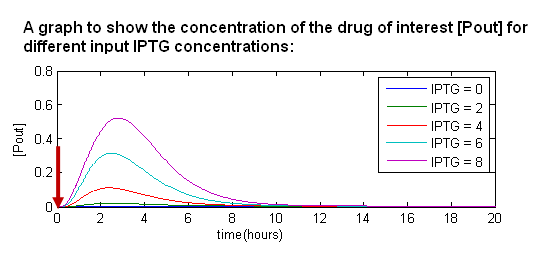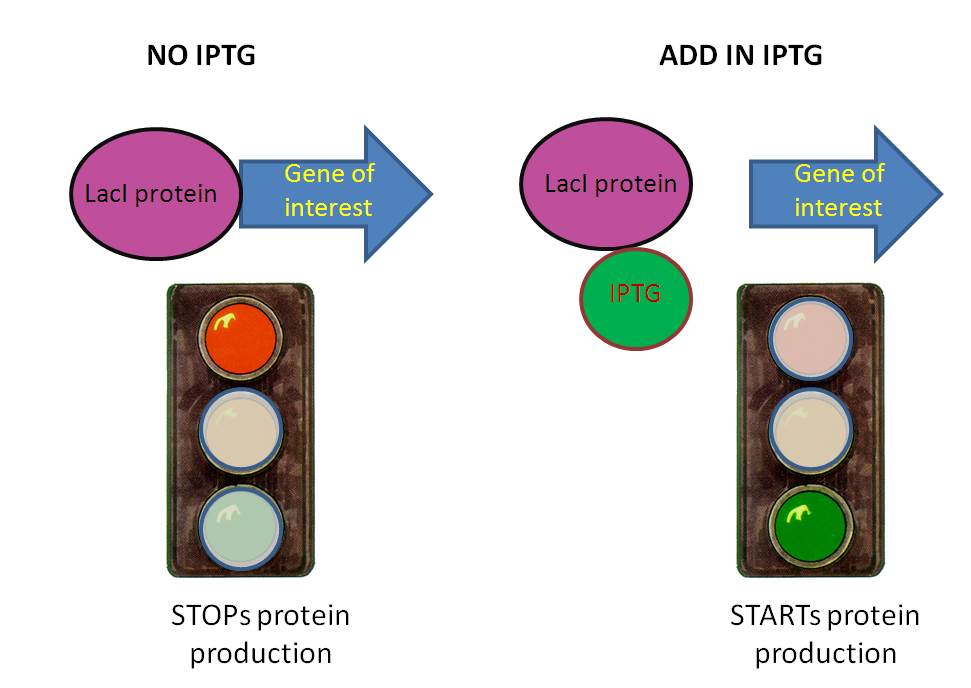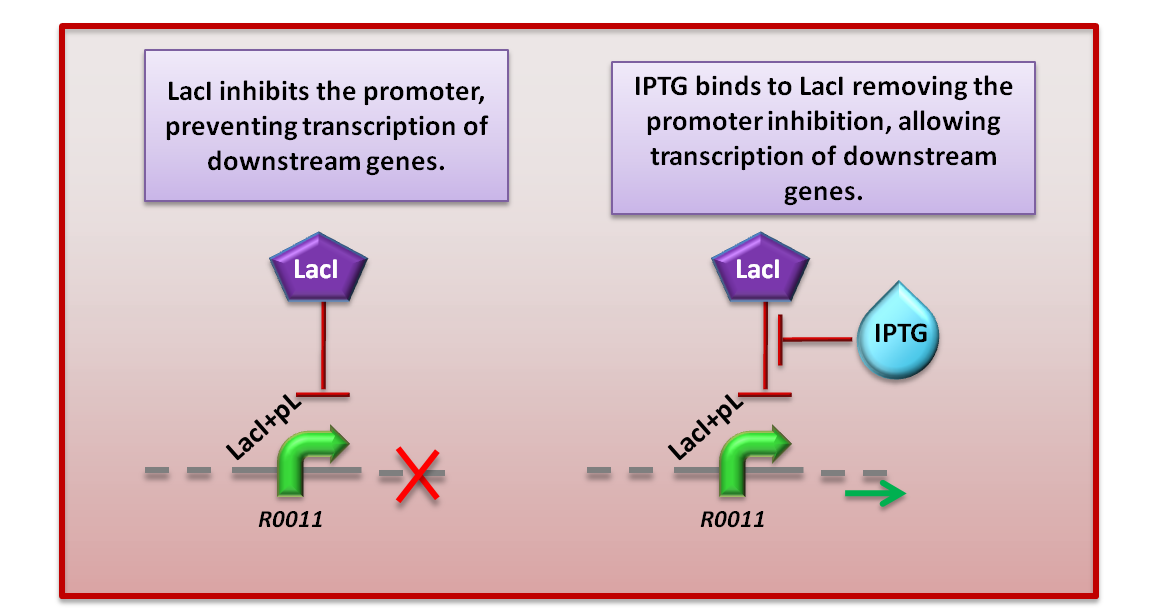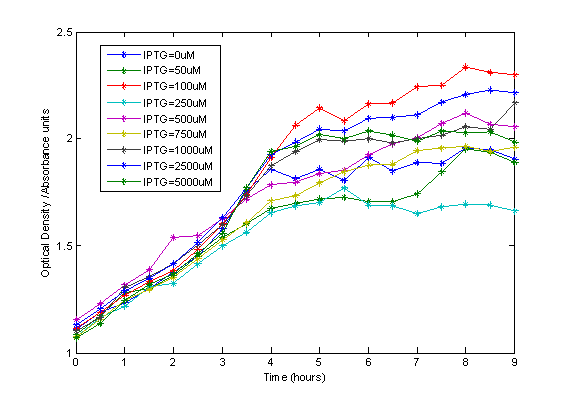Team:Imperial College London/Chemoinduction
From 2009.igem.org

Contents |
Module Integration - Chemoinduction
Chemical Induction
Overview
Our system is 'kick started' by the addition of a compound, IPTG, which activates Module 1 of our system. This is achieved by putting the genes for Module 1 under control of a chemically inducible genetic component called a promoter.
Rationale
In designing our system, we chose to use an inducible (switchable) promoter rather than a constitutive (always ON) promoter. This is to allow the cells to grow to a certain cell density before forcing them to produce protein. The production of protein can be a burden on the cell's resources, so the culture must be allowed to grow to a certain density before the production of protein is induced.
Theory
Genetic Circuit
From the Module 1 genetic circuit, in the absence of IPTG in the system, the LacI repressor inhibits production of the protein of interest.
When IPTG is added in we start the production of the drug of interest:
In a batch culture system, a defined volume of media is innoculated with a small number of cells. If the cells are being used for protein production, it is vital that synthesis is initiated at the right time. The optimum time for protein production is when there are a large number of rapidly dividing cells in a nutrient rich media.
In our system, the protein of interest is synthesised at the start of the production process in a phase known as Module 1 . Importantly, the time at which Module 1 starts is controlled by the addition of a chemical inducer called IPTG. This means that Module 1 can be initiated when there is the optimum ratio of cells to remaining nutrients.
Induction with IPTG
IPTG is an allolactose analogue. Allolactose is the lactose metabolite that triggers the transcription of the lactose operon in natural systems. Allolactose and IPTG activate transcription of the lac operon by binding to the LacI protein. When such binding occurs, the LacI protein changes confirmation, which renders it unable to bind to the operator region thus allowing the RNA polymerase to continue reading beyond the operator and transcribe the downstream genes.
Animated explanation
Results
Wetlab
Different concentrations of IPTG were added to a 96-well plate [link to assay] of e-coli Top 10 cells containing LacI-RFP genetic constructs. Here we measured the optical density of the cells over-time, for different concentrations of IPTG to monitor the effects in the culture. The IPTG growth curve results are plotted in the figure (ADD A FIGURE CAPTION TO IT: FIG1, FIG2 ETC).
By visual assessment,the growth rate of the culture prior the saturation phase stays within a narrow range and does not change significantly with concentrations of [IPTG]. Therefore, we can conclude that [IPTG] in the concentration ranges we are using does not affect cellular growth and is non toxic. The effects of IPTG have been widely studied [SAY THAT WE ARE CONFIRMING SOMETHING WELL KNOWN ANYWAY BY OTHERS]
Modelling
Taking into account the indications from the wetlab, we can then draw a relationship between different input IPTG concentrations and the amount of polypeptide produced.
- When we introduce IPTG into the system, it temporarily removes LacI from the system. Hence, during this period of time, we produce the drug of interest.
- When the effects of IPTG wear off, the system returns to equilibrium.
- The more IPTG we add in, the higher the amount of output protein.

DAVE:
FROM THE BOTTOM ONWARDS WE MAY NEED TO SHORTEN OR ADD SOME STUFF TO LEARN MORE TABS.IVE COMMENTED IT OUT, NOT DELETED IT. ALSO ADD LEARN MORE TABS FOR WETLAB AND DRY LAB LIKE IN M3 OVERVIEW!
 "
"









